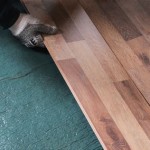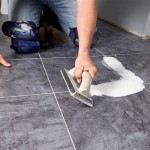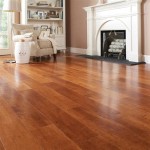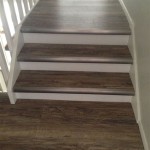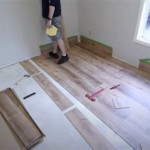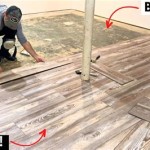Vinyl Plank Flooring on Concrete Basement Floor: Essential Aspects to Consider
Transforming a concrete basement floor into a stylish and comfortable living space can be effortless with Vinyl Plank Flooring (VPF). This flooring option has gained immense popularity due to its durability, versatility, and cost-effectiveness. If you're considering VPF for your basement, here are the essential aspects to keep in mind:
Subfloor Preparation
Proper subfloor preparation is crucial for a successful VPF installation. Ensure your concrete floor is level, clean, and dry. Any cracks, unevenness, or moisture issues must be addressed and repaired beforehand. Consider using a self-leveling compound or grinding the surface to achieve a smooth and stable base.
Moisture Control
Concrete basement floors are prone to moisture penetration, which can damage flooring materials. To prevent moisture issues, install a vapor barrier between the concrete and the VPF. A polyethylene sheeting or barrier matting can effectively block moisture and protect your flooring.
Underlayment
An underlayment layer beneath the VPF provides additional moisture protection, cushioning, and sound insulation. Choose an underlayment that is specifically designed for concrete subfloors and provides a moisture barrier. Cork, foam, or membrane underlayments are excellent options.
VPF Selection
VPF is available in various styles, textures, and colors, allowing you to customize the look of your basement. Consider the traffic patterns, moisture levels, and desired aesthetics when selecting the VPF. High-quality VPF is durable, water-resistant, and has a wear layer that protects the design from scratches and wear.
Installation Method
VPF can be installed using three primary methods: glue-down, floating, or click-lock. Glue-down VPF provides a permanent bond to the subfloor, while floating and click-lock systems are designed for DIY installation. Floating VPF planks are not attached to the subfloor, while click-lock planks simply lock together without glue.
Maintenance
Maintaining VPF is effortless. Regular sweeping or vacuuming and occasional damp mopping are sufficient to keep your floor clean. Avoid harsh chemicals or abrasive cleaners, as they may damage the protective wear layer. If necessary, you can repair damaged planks by removing and replacing the affected areas.
Additional Considerations
In addition to the essential aspects discussed above, consider these additional factors when installing VPF on a concrete basement floor:
- Acclimation: Allow the VPF planks to acclimate to the basement environment for at least 48 hours before installation.
- Expansion Gaps: Leave expansion gaps around the perimeter of the room and any fixed objects to allow for movement and prevent buckling.
- Transitions: Use appropriate transition pieces when connecting VPF to other flooring materials.
By considering these essential aspects, you can ensure a successful VPF installation on your concrete basement floor. VPF offers a durable, stylish, and comfortable flooring solution that will elevate the aesthetic appeal and functionality of your basement space.

Vinyl Plank Flooring On Concrete Basement Pros Cons

Best How To Install Vinyl Plank Flooring Four Generations One Roof

Tips For Installing Vinyl Plank Over Concrete Floors Lemon Thistle

How To Install Vinyl Plank Flooring On Concrete Step By Guide

Vinyl Plank Flooring On Concrete Basement Pros Cons

Vinyl Plank Flooring Installation Basement Remodel Before And After

Laminate Flooring On Concrete Basement Floors Expert Installation Guide Csg Renovation

Vinyl Plank Flooring Interior Design Fynes Designs

Best How To Install Vinyl Plank Flooring Four Generations One Roof

Tips For Installing Vinyl Plank Over Concrete Floors Lemon Thistle
See Also
